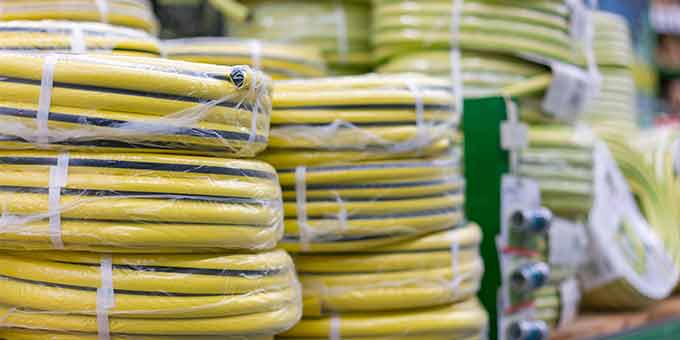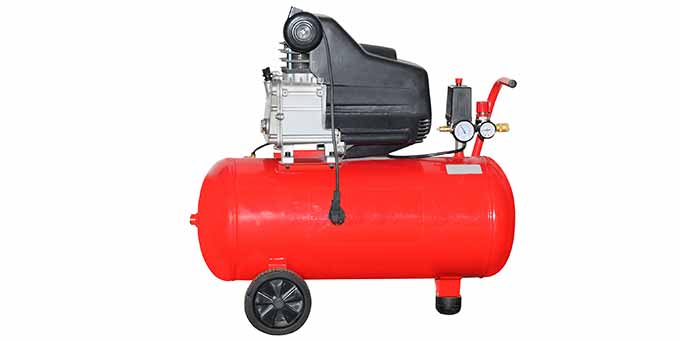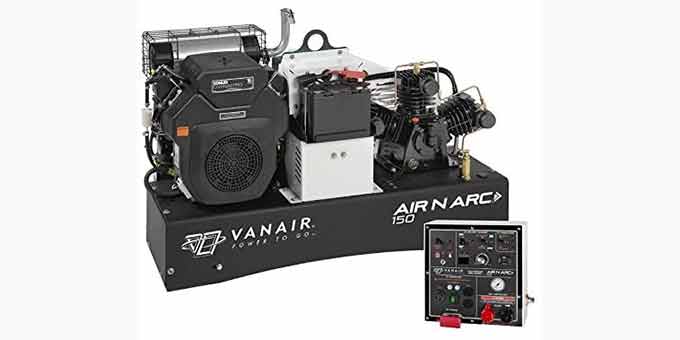Many people wonder what the best pipe material is for a new compressed air system. Manufacturers have many choices when it comes to the compressed air piping materials they offer. Generally, aluminum and copper are the best options.
Plastic Pipe
Plastic pipes are lightweight, cheap, and easy to install. With that, they are non-corrosive. However, there are different plastics, and they’re not all the same. If you’re using plastic materials for your compressed air channels, it’s crucial to ensure that it’s durable and can handle many years of use.
This also means that the plastic pipes can’t be damaged by lubricants and air compressor oils from the compressed air system. On top of it all, the plastics you choose must be OSHA-approved to use in an air pipe and provide clean air at all times. Typically, it’s the most commonly used pipe because it is lightweight.
ABS, HDPE, and PE for a Compressed Air System
When you want to use plastic piping for your compressed air piping system, you have many other options. These include high-density polyethylene (HDPE), polyethylene (PE), and acrylonitrile butadiene styrene (ABS). Those materials retain most of the benefits of CPVC and PVC but are much more durable. With that, they don’t degrade when they’re exposed to compressor lubricants or oils.
HDPE, PE, and ABS plastics are appropriate to use in your compressed air piping systems and have various benefits over metal. These include:
- The materials are easy to work with and lightweight. You need no special supports or bracing.
- Plastics are easily cut to fit using standard tools; you may also glue them together instead of welding them.
- The interior surface is smoother and provides maximum laminar flow.
- Plastics don’t corrode, so there’s less risk of getting particulates in the air flow, even at high speeds.
However, high-quality plastic pipes don’t match the durability and strength of a metal system. The cement used as connectors might be more prone to failure and air leaks than traditional welded joints. However, if the system is well-designed with appropriate cement, it offers a similar performance to metal pipes.
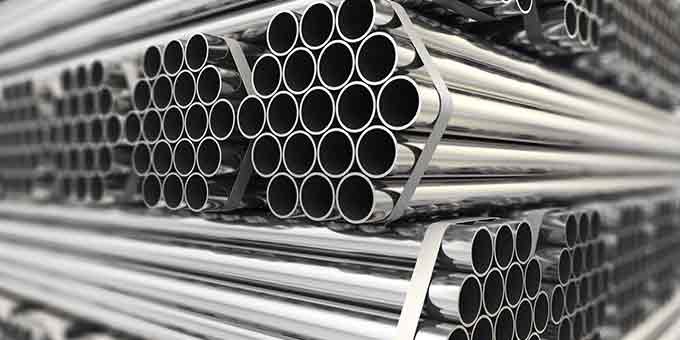
Metal Pipe
Pipe systems made from various metals are a traditional choice for your compressed air distribution. Metal piping is more resistant to blowouts, splits, and cracks, and it’s stronger.
With that, they don’t degrade from lubricants and oils and are less likely to warp than a plastic piping system. For those reasons, metal is a popular choice for compressed air piping systems.
Metal is more expensive and could take longer to install. Plus, it often requires special tools to get the strength and durability you want. However, when they are in place, they last a lot longer than older installations of other materials. There are various metal options available, and each one has advantages.
Black Iron Pipe
Black iron piping is a standard option for compressed air delivery. You can find black metal piping in old installations, and iron piping is durable and strong, so it can withstand abuse.
An iron piping system uses traditional joining techniques (welding or threading), so any plumber can install them with fittings that are found at any local hardware store.
Iron piping does include a few drawbacks, though. These include:
- An iron pipe is very heavy, so it must be anchored in a suspended piping system.
- Iron is hard to join and cut, so it requires skill from a welder or plumber. Leaks can often develop in the welds or joins.
- Black piping can also produce rust contamination if it comes into contact with moisture from air compressors.
- Whenever rust develops, it causes blockages and can get into the compressed air stream. That means the airlines are fouled, and production processes could be delayed.
While general maintenance can help, the little flakes are bound to come out at some point. It can be very time-consuming to upgrade to newer pipes later, and many people feel that it’s best to avoid black iron for that reason.
Galvanized Steel Pipe
Galvanized piping offers some of the same disadvantages and advantages of black iron, with a major exception – galvanization reduces corrosion, so it’s a popular choice in a compressed air system.
If you use galvanized steel pipes, you should know that the galvanized coating resists moisture. That’s why it’s used for water distribution. However, the pieces of the zinc coating can flake off with time and ends up in the air pipe and the tools.
The debris from the galvanized pipe causes damage to various components. Plus, as they exit the blowgun, the flakes may cause serious bodily harm, becoming razor-sharp shrapnel. Overall, this is a huge safety concern and the reason why it’s not recommended to use galvanized piping.
Overall, it’s best to steer clear of galvanized pipe because it is potentially fatal.
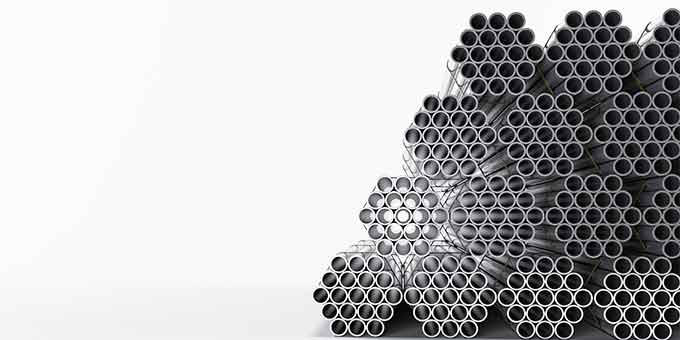
Stainless Steel Piping for Compressed Air Systems
Stainless steel is very durable, so it’s the longest-lasting material out there and the most expensive. However, you can minimize corrosion with stainless steel piping because it doesn’t corrode or degrade like galvanized or black iron pipes. Therefore, it’s excellent for applications where you don’t want rust or particulates making an entrance into the air stream.
With that, stainless steel looks great, so it’s aesthetically pleasing.
However, stainless steel pipe threads are hard to work with and cut, so you must hire specialty installers with the right training and tools for the job. It’s also heavy and prone to leaking around the welds and joints. Because of the high cost and other drawbacks, this is one of the least common materials used in compressed air systems.
While it has some durability benefits as black pipe and doesn’t rust, it’s a lengthy process to install it. You must plan carefully when using stainless steel. The best thing to do is work with another material altogether.
Copper Pipe
Copper pipe makes a great choice for compressed air piping. It’s lighter than its iron counterpart and easier to install than stainless. Plus, copper piping uses standard joining techniques and readily available fittings. The same properties making it great for general plumbing purposes also makes it attractive for compressed air systems.
The main drawback here is cost. It’s risen a lot in recent years. Therefore, it may offer an aesthetically pleasing installation, but copper pipes cost you a lot.
Still, it’s the best choice for clean air applications. Since copper and water don’t create rust or corrosion, the air delivered from the copper piping is free of particulates and cleaner.
Aluminum Pipe
Aluminum piping for a compressed air piping system has grown exponentially because it’s corrosion-resistant, lightweight, and easy to install.
Modular compressed air piping made with aluminum can also be modified. They don’t need a lot of tools to install it or heavy supports. Whether you want cleaner air or the ability to transport inert gases, aluminum can do the job.
Since the cost of producing compressed air is high, it’s best to reduce leaks in the piping system. Aluminum piping might be the right choice for you.
PVC or CPVC - Not OSHA-Approved for Compressed Air Systems
PVC pipe or CPVC piping is very easy to work with and cost-effective. That means they are quite popular for many applications, including plumbing. However, OSHA has actually banned PVC pipes from being used in compressed air systems.
Why is that so? The reason OSHA doesn’t like these materials being used for compressed air piping is that the plastics aren’t durable enough to handle high-pressure applications, including compressed air distribution.
On top of that, the plastics can degrade when they touch lubricants and oils from the air compressor. These piping systems have no corrosion resistance at all, which can damage the air quality and make your air tools more difficult to use. Overall, the pipes could splinter or fracture with time, especially with a big pressure drop.
Then, the degradation leads to more air leakage with an increased risk of rupture. Injuries were caused by CPVC and PVC being used, which led OSHA to ban the use of these materials for such applications. It is an OSHA violation to use this material.

FAQs
What Size Pipe Should I Run for My Air Compressor Systems?
Air compressors require the right length of pipe to have an efficient system. Use the shortest pipe length you can to reduce the pressure drops you face. It’s best to use a gauge of 10 percent for a pressure drop of pipe sizes 1/2 inches in diameter or less.
Will PEX Hold Air Pressure?
Yes, PEX holds air pressure in compressed airlines and is quite flexible. Therefore, you can use it in place of a rigid pipe. It also withstands pressure bursts of about 800 PSI.
Can I Use Black Pipe for Air Compressor Lines?
Black pipe is a commonly used pipe recommended primarily for compressed air systems. It’s inexpensive and readily available, but it’s also highly durable. Though black pipe offers many benefits, it can have rust buildup, which ultimately damages pneumatic tooling.
With that, black pipe systems are uncoated, and moisture initiates rusting that increases with time. You may control the presence of moisture with a dryer, but you can’t completely eliminate this issue. Therefore, that could reduce the compressed air system’s efficiency with time.
Conclusion
Whether you’re updating an existing system or want to create compressed air pipes, the best option depends on many things. However, aluminum and copper are ideal, depending on your budget and other constraints.


